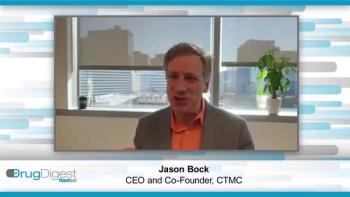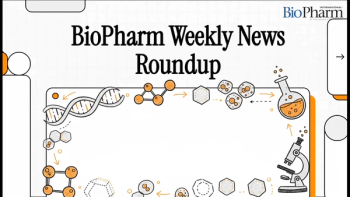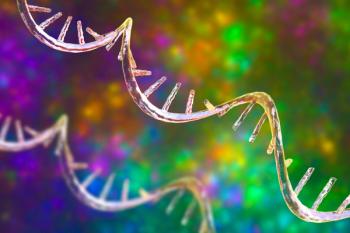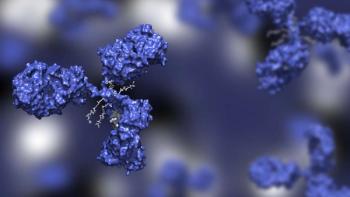
Celltrion’s Biosimilar to Remicade Likely to be Approved for All Indications
On Feb. 9, 2016, an FDA Arthritis Advisory Committee will meet to discuss a biologics license application (BLA) for CT-P13 (Remsima), a proposed biosimilar to Janssen Biotech's Remicade (infliximab), by South Korea’s Celltrion in partnership with Pfizer. The BLA was submitted via the abbreviated 351(k) pathway and seeks to cover all of the eight indications that are approved for Remicade.
On Feb. 9, 2016, an FDA Arthritis Advisory Committee will meet to discuss a biologics license application (BLA) for CT-P13 (Remsima), a proposed biosimilar to Janssen Biotech's Remicade (infliximab), by South Korea’s Celltrion in partnership with Pfizer. The BLA was submitted via the abbreviated 351(k) pathway and seeks to cover all of the eight indications that are approved for Remicade. A biosimilar version of Remicade-under the names Inflectra and Remisima, depending on location-has already been approved in various regions, including parts of Europe, Canada, South Korea, Japan, and India.
Although Remsima is already available in Canada, it is only approved for some of Remicade’s indications. Health Canada gave the drug the green light for rheumatoid arthritis (RA), ankylosing spondylitis (AS), psoriatic arthritis (PsA), and plaque psoriasis, but
Remicade is a monoclonal antibody (mAb) that binds to human tumor necrosis factor alpha (TNFα). Current anti-TNF therapies on the market that serve as competitors to infliximab include adalimumab, certolizumab pegol, and golimumab. This class of medication is typically administered in a hospital or a physician’s office.
In briefing documents released in advance of the meeting, Celltrion wrote that from a structural and functional standpoint, CT-P13 was highly similar to the reference product and “residual uncertainties arising from physicochemical and structural studies had little or no impact on biological activities.” Celltrion says that no clinically meaningful differences were observed in pharmacokinetics, pharmacodynamics, efficacy, safety, or immunogenicity in AS and RA patients. More than 30 distinct orthogonal methods were used to evaluate the analytical similarity of CT-P13 to Remicade, including testing of quality attributes such as primary structure, protein content, higher-order structure, aggregates, charge, glycosylation profiles, mechanism of action exploration through multiple bioassays, and binding assays of TNF and the Fc receptors.
FcγRIII binding and glycosylation differences
The “Chemistry, Manufacturing and Controls (CMC)” section of the briefing did note some differences in product glycosylation between Celltrion's candidate and Remicade. FDA wrote, "the binding affinity of CT-P13 to the NK [natural killer] expressed FcγRIIIa and b was shifted lower compared to US-licensed Remicade . . . this was associated with subtle shifts in glycosylation at Asn297 on the heavy chain of the two antibody products detected in the analysis using a HPAEC-PAD [high performance anion-exchange chromatography with pulsed amperometric detection] chromatography method (e.g., CT-P13 on average had <39% G0F, the predominant form, while US-licensed Remicade & EU-approved Remicade had 41–46% G0F).” Although the briefing articulates that glycosylation of antibodies is typically heterogeneous, and up to 20 different detectable N-linked glycan forms can exist in an antibody preparation, "the relative levels of minor species like G0 (no terminal galactoses, but no fucose), which were different between CT-P13 (0.7%) and US-licensed Remicade (1.4%), can have an impact on binding to FcγRIII and are important to measure and control in antibody-based biopharmaceuticals."
So, why does glycosylation matter in the context of the discussion of the approval of CT-P13? FDA writes in its briefing, "ADCC activity may vary with the strength of the FcγR:Fc bridging, which in turn may be dependent on the glycan composition on the antibody." Thus, glycan composition could play a part in ADCC activity, which could influence how effectively a drug works within the body. For emphasis, FDA pointed out that TNF inhibitor Enbrel (etanercept), which has low ADCC activity, is not approved for treatment of CD or UC. Despite these differences in glycosylation and binding, FDA concluded that when CT-P13 is compared with the reference product, “the biological functions that these subtle differences might impact (ADCC) are nevertheless within the quality range of the reference product.” FDA also admitted that it is difficult to pinpoint the exact mechanism of action of TNF inhibitors in IBD, and ADCC is only one of the many mechanisms of action (MoA) that could be at play: "It is noteworthy that products without any ADCC capability have been approved for the treatment of patients with Crohn’s Disease (i.e., certolizumab)." Celltrion further
As Stacie Ropka, an IP attorney from Axinn Veltrop & Harkrider who holds a PhD in microbiology and immunology told BioPharm International, glycosylation differences can affect ADCC. "If ADCC is an important mechanism regarding efficacy of the antibody and changes to the glycosylation pattern either reduce or block ADCC, there is potential for reduced efficacy. If there are changes in the glycosylation pattern that interfere with the interaction between the Fc portion of the antibody and the receptors on the natural killer cells (cell B), you might not get ADCC or the ADCC might be less robust," Ropka said. "But I emphasize, this will depend on how important ADCC is to the overall efficacy in the first place and how much ADCC is diminished (if at all) by a different glycosylation pattern."
Interchangeability on the horizon?
RAPS’ Zachary Brennan
Even though the company is clear that it does not seek this designation, it is still possible the company could request an interchangeability status if the product is approved by FDA. Evercore ISI’s Mark Shoenebaum told BioPharm International that Celltrion will apply for this designation, but will likely be required to conduct further clinical trials, which may take a few years. In the meantime, Celltrion may already have some preliminary data to support switching-FDA wrote in its briefing, “the single transition from EU-approved Remicade to CT-P13 during the long-term extension studies in RA and AS did not result in worse safety or immunogenicity profile. This would support the safety of a clinical scenario where non-treatment naïve patients undergo a single transition to CT-P13.”
Remicade generates $6.5 billion in annual sales for J&J-most of that revenue in the US-and analysts predict a biosimilar version would slash the price of Remicade by 25%. Overseas, Merck markets Remicade. Merck executives recently said on a fourth quarter earnings call that it expects biosimilars to continue to have a negative impact on earnings; sales of the drug
Disease organization concerns linger
The Crohn's & Colitis Foundation of America
Sources: FDA, RAPS, Celltrion, The Crohn's & Colitis Foundation of America
Newsletter
Stay at the forefront of biopharmaceutical innovation—subscribe to BioPharm International for expert insights on drug development, manufacturing, compliance, and more.





